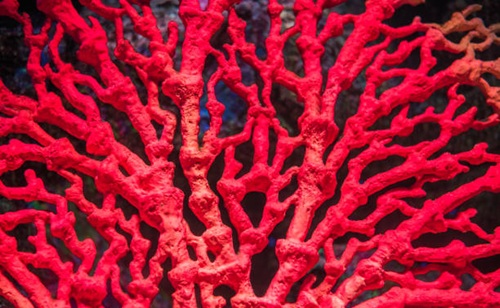Red coral, also known as Moonga in Hindi, is a highly valued gemstone in Indian astrology and jewelry. Associated with the planet Mars (Mangal), it is believed to bring courage, confidence, vitality, and success when worn by the right person. Because of its demand and spiritual significance, the market is flooded with fake or synthetic red corals made from plastic, glass, or dyed materials.
If you want to gain the true benefits of wearing red coral, it’s crucial to know how to identify original red coral. Let’s explore the key tests and signs that help distinguish the real gemstone from imitations.

Check the Surface
An authentic red coral has a smooth and shiny surface with a natural luster that doesn’t look artificial. However, it is not perfectly flawless — you may notice tiny natural lines or marks on the surface, which is normal. Fake red corals made of glass or plastic often appear too perfect, overly glossy, or show air bubbles inside.
Color Examination
Original red corals come in shades ranging from deep red, pinkish-red, to orange-red. The color is uniform but not unnaturally bright. If the stone looks too vibrant, neon-like, or has an uneven color distribution, it may be dyed or synthetic. Natural coral gives off a warm and earthy red, not a flashy tone.
The Milk Test
A traditional method to test authenticity is the milk test. Place the coral in a glass of milk. If it is real, the milk will gradually take on a pinkish or reddish hue. Fake stones usually do not change the color of the milk.
The Magnifying Glass Test
Under a magnifying glass or jeweler’s loupe, a natural red coral will reveal tiny wood-grain like lines or inclusions, which indicate organic origin. Fake corals, made of glass or plastic, often look flawless or may show tiny bubbles inside — a clear sign of artificial creation.
Scratch Test
Red coral ranks about 3.5 on the Mohs scale of hardness, meaning it is relatively soft compared to gemstones like sapphire or diamond. If you gently scratch the surface with a sharp needle, the real coral may get a slight mark. Glass imitations, however, are harder and won’t scratch as easily, while plastic ones will scratch too quickly. This test should be done carefully to avoid damage.
Cold Touch Test
Real red coral feels naturally cool to the touch, even at room temperature, similar to other natural gemstones. Fake corals made of plastic feel warm or room-temperature instantly when you hold them in your hand.
Weight and Density
Since coral is an organic gemstone, it is denser than plastic. A genuine red coral will feel heavier than it looks, whereas fake ones (especially plastic imitations) will feel unusually light.
Certification and Trusted Sellers
The most reliable way to ensure authenticity is to buy from certified gem dealers and ask for a gemstone authentication report. Reputed sellers provide lab certificates verifying the origin and quality of the red coral. Avoid street vendors or unverified online sellers who offer coral at suspiciously low prices.
Conclusion
Identifying an original red coral requires a close look at its surface, color, texture, weight, and natural inclusions. Traditional tests like the milk test and magnifying glass inspection are helpful, but the most dependable method is purchasing from trusted jewelers with certification.
A genuine red coral not only enhances jewelry but also provides the astrological and spiritual benefits associated with Mars. Wearing a fake stone, however, may not only be ineffective but can also bring disappointment.